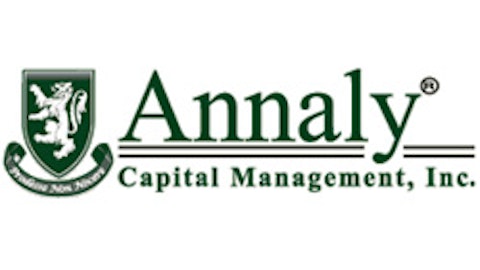 If you’re a long-time reader of StreetAuthority, you know by now that we almost never recommend stocks with yields higher than 10%.
If you’re a long-time reader of StreetAuthority, you know by now that we almost never recommend stocks with yields higher than 10%.
If the yield is higher than that, it’s usually a sign that the company’s fundamentals are sagging, investors are bracing for a dividend cut — or worse…
But today, I’m going to show you how to break one of the cardinal rules of safe income investing and buy a stock yielding 17% without losing a single night’s sleep.
All you have to do is think more like a trader. Now, I know that doesn’t come easy to most income investors, but it’s easier than it sounds. In fact, I’m going to show you how one simple tool allows you to know when it’s safe to buy stocks with ridiculously high yields, hold them for a period of time and collect any dividends you might receive, and then know when it’s time to get out before the rest of the crowd loses their shirts.
But it’s one thing to tell you this. I want to prove it to you with one of the most followed high-yield mortgage real estate investment trusts (mREITs) of the past few years — American Capital Agency Corp. (NASDAQ:AGNC).
If you’re the type of income investor that’s always been willing to take some risk to get double-digit yields, then you’re probably familiar with American Capital Agency Corp. (NASDAQ:AGNC) by now. You might have even owned some shares at some point. Maybe you still do.
For the past five years, the trust has sported a monster dividend yield ranging from 14% to over 20%.
American Capital Agency Corp. (NASDAQ:AGNC) buys debt issued by U.S. government entities such as Ginnie Mae, Freddie Mac and Fannie Mae — which means any principal or interest payments are government-backed as well. The majority of the trust (70%) is invested in 30-year, fixed-rate, mortgage-backed securities.
Despite the fact that many high-yield securities carry heavy risk, this mREIT’s efficient use of capital has allowed revenues and profits to soar. From May 2008 to the end of 2012, the company’s annual revenue rose from $41 million to $1.44 billion. And for much of that time, American Capital Agency Corp. (NASDAQ:AGNC) sported a return on equity (ROE) around or above 20% — meaning for every $1 invested by shareholders, the trust managed to return 20 cents in the form of pure profit.
Meanwhile, since the end of 2011, the trust has carried no debt. Instead, it’s nearly doubled its cash hoard to $3.3 billion. From American Capital Agency Corp. (NASDAQ:AGNC)’s start in May 2008 until its peak in 2012, shares gained 339%, including dividends.
Then, September 2012 came around… The stock hit an all-time high near $37 per share at that point. And while the company was still enjoying healthy profits at the time, (and has ever since), the company’s shares have tumbled dramatically.
Since its peak, the stock price has fallen 33%, despite the broader market rising 11%.
Fundamentals work fine up to a certain point. But if you followed a few simple trading signals, you would’ve known EXACTLY when to buy and sell this stock, avoiding the excessive risk and unexpected stock dive.
To be more specific, I am talking about using “relative strength.”
If you’ve never heard of relative strength, don’t worry. It’s simple to understand.
Relative strength is found by calculating the percentage price change over the past six months for every stock and exchange-traded fund (ETF). You then sort these changes from high to low and assign the highest value a relative strength rank of 100 and the lowest value a rank of zero.
Every stock is assigned a rank based on where it fits into that range. I like to use 70 as the limit for buys and sells. If relative strength is greater than 70 (meaning a stock is rising more than 70% of the market), the stock or ETF is a buy. I sell whenever the rank falls below 70.
You can see American Capital Agency Corp. (NASDAQ:AGNC)’s relative strength charted below its price in this graphic:

In this case, AGNC’s relative strength fell below 70 on September 21, 2012 (when the shares were still above $35), meaning it was time to sell. It was a crystal-clear signal that investors should get out.
That one signal could have saved an investor from losing thousands of dollars. What’s more, this signal got them out of an underperforming stock during one of the best market rallies we’ve ever seen — allowing them to put money to work elsewhere.


